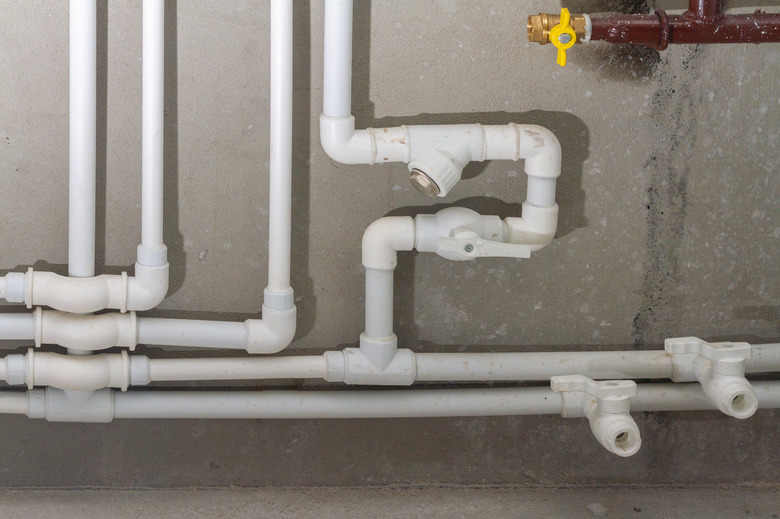How To Use Heat Tape On PVC Pipe
We may receive a commission on purchases made from links.
When working on the plumbing in your home, you'll generally find that PVC pipe isn't recommended for hot water applications where the water temperature might exceed 140 degrees Fahrenheit. Knowing this may give you pause if you find you need to apply heat tape to any of your plumbing.
Is it safe to wrap heat-sensitive PVC pipe in heat tape? The answer is yes, but only if you use a tape specifically labeled as safe to use on PVC. You'll also need to make sure the tape you choose has a temperature regulator if using it on PVC.
Before You Begin
Before You Begin
Heat tape is a safe way to keep your pipes from freezing when it's installed properly, but it's a fire hazard if it's not. As such, there are a few things you need to understand before you start wrapping your pipes. First, be aware that there is more than one type of heat tape. You want the one made for wrapping your plumbing pipes. You do not want the kind used to prevent ice dams on roofs. Read the package or product description carefully to ensure you get the proper tape for the job.
Some heat tapes work outdoors so that you can use them to wrap pipes underneath mobile homes or keep well water flowing freely. Other tapes, however, require indoor use in basements and other protected areas. Always use outdoor tape outdoors and indoor tape inside; don't interchange the two.
Further understand that you're meant to use heat tape only on exposed plumbing. Never use heat tape on pipes that will be enclosed inside of a wall. In this instance, you will need to install pipe insulation or find another method of preventing frozen pipes.
Things Needed
How to Use Heat Tape on PVC Pipe
1. Perform a Safety Check
Before you start working, verify that you have the correct heat tape for indoor or outdoor use and that the tape you have chosen is suitable for PVC pipe. If you plan on wrapping any PVC drainpipe, confirm that your tape allows for that. The requirements for drains are a little different, so check your tape to make sure it's safe.
- Check your measurements. The amount of heat tape you need will depend on the length of pipe you're wrapping and how wide that pipe is. The tape packaging will help you determine how much tape you need, and it's a good idea to make sure you have enough before you get started.
- Verify that there is a ground-fault circuit-interrupter (GFCI) outlet nearby to plug in your heat tape. If not, have one installed by a licensed electrician.
- Examine the pipes you plan to wrap and verify that there are no leaks. If you find any, fix them before proceeding.
- Remove any old heat tape or pipe insulation if applicable.
2. Wrap the Pipe
When wrapping the pipe, begin at the electrical outlet to make sure you have enough length to plug the tape in easily. You can then proceed to wrap the pipe according to the tape manufacturer's instructions. Note that though it is often called "heat tape," sometimes you will actually find a less flexible heat cable. Cables typically run along the side of the pipes rather than wrapping them.
- Wrap the tape snuggly around the pipe, leaving as much space between wraps as the tape instructions suggest. The goal isn't to cover the entire pipe in tape. Spacing the tape wraps too close together can cause overheating of the pipe and can create problems.
- Secure the heat tape to the pipes at least every 2 feet with a piece of electrical tape. If your heat tape comes with some other type of fastener, you can use it instead of electrical tape to hold the heat tape in place.
- Manipulate the end of the wrap so that the end cap is not touching the ground, where it could collect moisture and short out.
- Insulate the pipes over the heat tape if allowed by the tape manufacturer. Some tapes cannot be covered. Others can but only if the pipe insulation is made of fiberglass or other nonflammable materials.
- Plug in your heat tape as needed to prevent freezing. Always plug the tape directly into a three-prong GFCI outlet. Plug it directly into the outlet and never into an extension cord.
Warning
Never wrap heat tape over itself during installation. Doing so could cause a short that burns through the PVC pipe or causes a fire.
